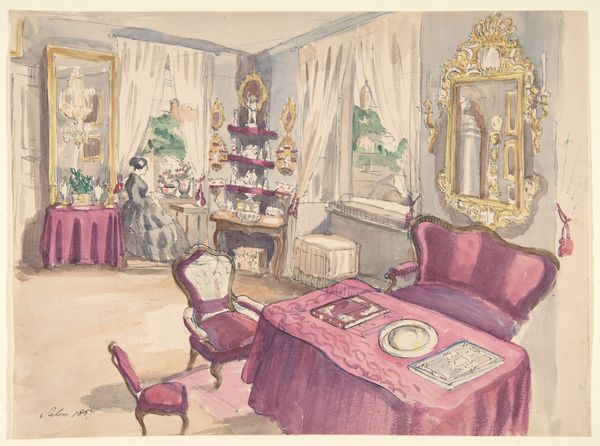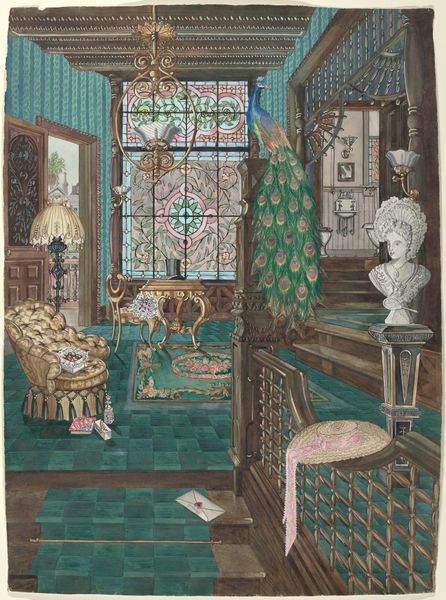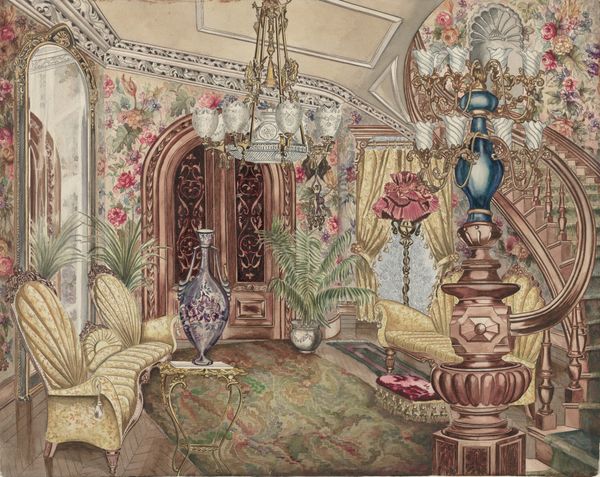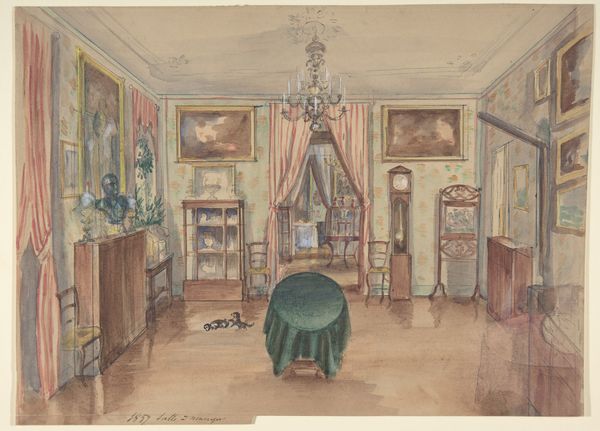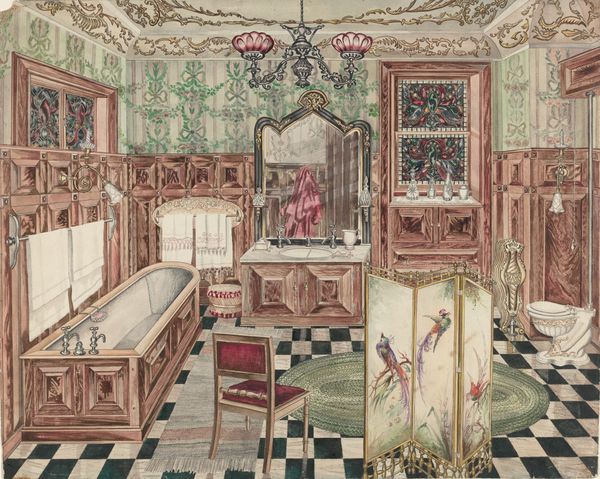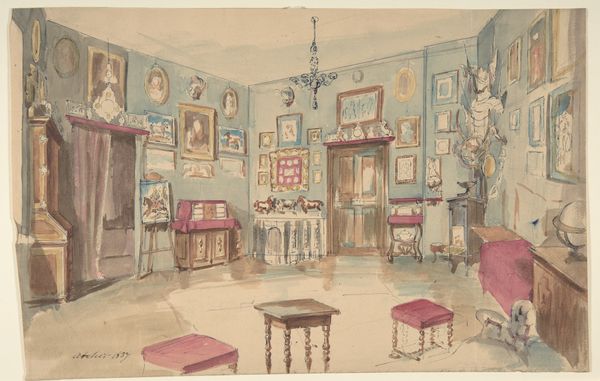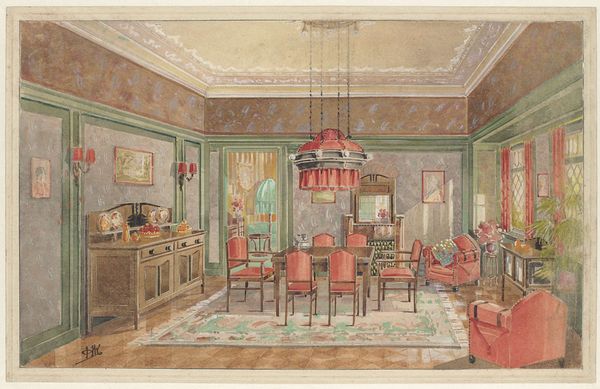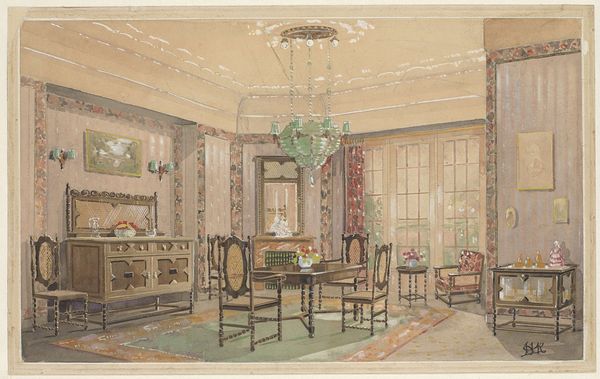
drawing, coloured-pencil, watercolor
#
drawing
#
coloured-pencil
#
watercolor
#
intimism
#
coloured pencil
#
watercolour illustration
#
genre-painting
#
modernism
Dimensions: overall: 56.9 x 77.6 cm (22 3/8 x 30 9/16 in.)
Copyright: National Gallery of Art: CC0 1.0
Curator: Perkins Harnly created this piece, "Room House Bed-Living Room," between 1935 and 1942, using watercolor and colored pencil. What strikes you initially about this detailed interior? Editor: Overwhelming domesticity, bordering on claustrophobia. The visual busyness…it almost feels stifling, doesn’t it? Yet there’s a strange charm. Curator: Indeed, the layering creates an intensified effect. Note the use of line: the verticals of the wallpaper clash playfully with the curves in the ornate furnishings. Then there is the patterned rug under the rocker opposing the bed. There is hardly any place for the eye to rest. Editor: Yes, but what's compelling is how each item speaks to a larger story of domesticity and loss. Consider that phrase prominently displayed above the doorway, “What is Home Without a Mother.” The entire composition feels weighted by nostalgia, a longing for an absent matriarch. The profusion of objects—furniture, portraits, keepsakes—seems almost like a bulwark against grief, each object an icon of what is lost. Curator: Precisely! Semiotically speaking, each of these motifs operates almost like signifiers creating a broader theme: what constitutes ‘home’ or, what is ‘lacking’. The repetition, however, almost borders on fetishizing the ‘domestic.’ The mirror reflecting a distorted version of this home hints to how idealized this reality is. Editor: And the symbols aren't accidental. Even something as mundane as the rocking chair evokes a sense of perpetual motion, perhaps the constant churn of memory or the rocking of an infant…absent. The floral designs throughout—in the china, the wallpaper—typically signify femininity and nurture. Harnly underscores this absent essence with these visual symbols. Curator: It's fascinating to view this intersection. This work transcends genre painting into a more analytical composition about psychological interiority by amplifying a sense of constructed reality, Editor: An intriguing visual statement, indeed, where the domestic becomes a stage for complex emotional dramas. Curator: It leaves you contemplating the psychological power inherent to how we shape and perceive our domestic space.
Comments
No comments
Be the first to comment and join the conversation on the ultimate creative platform.


